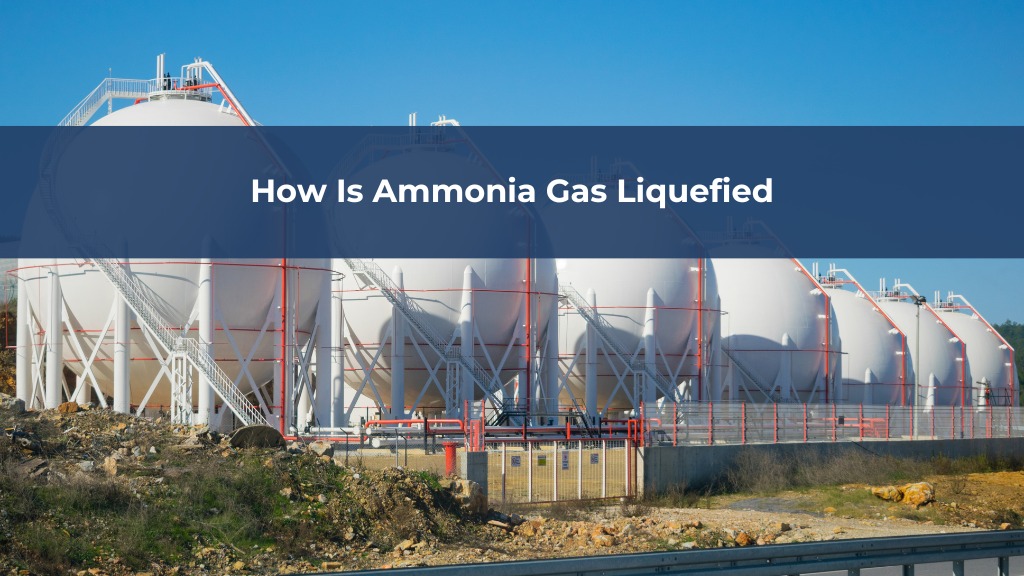Ammonia is a highly versatile chemical compound that is used in various industries, including agriculture, refrigeration, and manufacturing. With its numerous applications comes the need for safe transport to prevent any potential hazards or accidents. In this article, we will explore how ammonia tanks are designed to ensure the safe transport of this essential compound.
Understanding the Properties of Ammonia
Before delving into the design aspects of ammonia tanks, it is important to have a basic understanding of the properties of this chemical. Ammonia, the chemical formula NH3, is a colorless gas with a pungent odor. It is highly soluble in water, forming a strong alkaline solution. Ammonia is lighter than air and can liquefy at relatively low temperatures and moderate pressures.
Ammonia is widely used in various industries, including agriculture as a fertilizer, in refrigeration systems, and in the manufacturing of plastics and explosives. Its versatility stems from its unique properties and chemical composition, making it a crucial component in many industrial processes.
The Chemical Nature of Ammonia
Ammonia is composed of one nitrogen atom bonded to three hydrogen atoms. This chemical structure gives ammonia its characteristic properties, including its ability to act as a weak base and form stable compounds with various other substances. It is important to consider these properties when designing tanks for its safe transportation.
When exposed to air, especially in moist conditions, ammonia can form a white cloud due to its reaction with water vapor. This reaction is important to note when handling and storing ammonia to prevent any potential hazards or environmental impacts.
Physical Characteristics of Ammonia
In its gaseous state, ammonia is lighter than air, which means it tends to rise. It is flammable at certain concentrations and can readily ignite in the presence of an ignition source. Additionally, ammonia can cause severe burns, especially when it comes into contact with the skin or eyes. These physical characteristics necessitate careful design considerations for ammonia tanks to ensure safe transport.
Due to its high solubility in water, ammonia can pose risks to aquatic life if released into water bodies. Proper containment and handling procedures are essential to prevent accidental leaks or spills that could harm the environment and human health. Understanding the physical characteristics of ammonia is crucial for maintaining safety in its production, storage, and transportation processes.
The Importance of Safe Ammonia Transport
Transporting ammonia safely is crucial not only for the protection of human health and the environment but also for maintaining the integrity of infrastructure and preventing potential accidents. Let’s explore some of the risks associated with ammonia transportation and the regulatory standards that govern its safe transport.
Ammonia, a colorless gas with a pungent odor, is commonly used in various industries, including agriculture, refrigeration, and manufacturing. Its versatility and effectiveness make it a valuable commodity, but it also necessitates careful handling during transportation to prevent harm to individuals and the environment.
Risks Associated with Ammonia Transportation
Transporting ammonia poses several risks, primarily due to its toxic nature and flammability. In the event of a leak or spill, ammonia can rapidly disperse and form a toxic gas cloud, endangering both the transportation personnel and the surrounding population. Moreover, ammonia vapors can react with certain substances and ignite, leading to fire or explosions.
Given these risks, it is imperative for companies involved in ammonia transport to implement stringent safety measures and protocols. Regular maintenance of transport vehicles, thorough safety inspections, and continuous monitoring of ammonia levels are crucial steps in preventing accidents and ensuring the well-being of all individuals involved in the transportation process.
Regulatory Standards for Ammonia Transport
To ensure the safe transport of ammonia, strict regulatory standards are in place. These standards dictate various aspects, including tank design, labeling requirements, emergency response protocols, and employee training. Compliance with these standards is essential to mitigate the risks associated with transporting ammonia and protect public safety.
Furthermore, regulatory bodies conduct regular audits and inspections to verify compliance with these standards and address any potential gaps in safety protocols. Continuous training and education programs are also provided to transportation personnel to enhance their awareness of ammonia hazards and equip them with the necessary skills to respond effectively in case of emergencies.
Design Features of Ammonia Tanks
The design of ammonia tanks plays a critical role in ensuring the safe transport of this chemical compound. Let’s explore two key design considerations: material selection and structural design.
Ammonia, a pungent and colorless gas, is a vital component in various industries such as agriculture, refrigeration, and manufacturing. Its transportation and storage require specialized equipment to prevent leaks and ensure the safety of workers and the surrounding environment.
Material Selection for Ammonia Tanks
The materials used in the construction of ammonia tanks must be carefully chosen to withstand the corrosive nature of ammonia. Stainless steel and specially coated carbon steel are often used due to their excellent corrosion resistance. Reinforced fiberglass composites are also employed, especially for smaller ammonia storage tanks.
Moreover, the selection of materials takes into account factors such as temperature fluctuations, pressure changes, and the potential for ammonia exposure. These tanks undergo rigorous testing to ensure they can withstand the harsh conditions during transportation and storage.
Structural Design of Ammonia Tanks
Ammonia tanks are constructed using robust designs to ensure structural integrity under varying conditions. These tanks feature double walls or protective coating systems to prevent corrosion and avoid leakage. Structural reinforcements, such as stiffeners and bracings, are incorporated to enhance the overall strength of the tanks. Additionally, tanks are equipped with fittings for pressure relief valves and temperature monitoring devices.
The structural design of these tanks also considers factors such as seismic activity and environmental impact. Engineers work diligently to create designs that not only meet safety standards but also minimize the ecological footprint of the tanks. Advanced technologies, such as computer-aided design (CAD) and finite element analysis (FEA), are utilized to optimize the structural efficiency of these tanks.
Safety Mechanisms in Ammonia Tanks
In addition to proper tank design, various safety mechanisms are implemented to prevent potential accidents during ammonia transport. Pressure control systems and temperature management are key aspects in ensuring safe and efficient transport.
Furthermore, emergency shutdown systems are integrated into ammonia tanks to swiftly respond to any unforeseen circumstances. These systems can automatically isolate the tank from the rest of the transport system in the event of a malfunction or breach, minimizing the risk of widespread damage or harm.
Pressure Control Systems
Ammonia tanks are equipped with pressure relief valves that ensure the safe venting of excess pressure. These valves are automatically activated when the pressure inside the tank exceeds safe limits, preventing the tank from rupturing. Pressure relief systems are regularly inspected and tested to ensure their proper functioning.
In addition to pressure relief valves, ammonia tanks also utilize pressure monitoring systems that provide real-time data on internal pressure levels. This continuous monitoring allows operators to proactively address any pressure fluctuations and take corrective actions to maintain a safe operating environment.
Temperature Management in Ammonia Tanks
Controlling the temperature inside ammonia tanks is crucial to maintain the compound in its desired state, either as a gas or a liquid. Temperature sensors and monitoring systems are installed to ensure that the ammonia remains within the specified temperature range. This helps prevent any potential changes in pressure or physical properties that could compromise the safety of the tank and its contents.
Moreover, thermal insulation is applied to ammonia tanks to regulate temperature levels and minimize heat transfer with the external environment. This insulation not only helps in maintaining the desired temperature but also improves energy efficiency during transport, reducing operational costs and environmental impact.
Maintenance and Inspection of Ammonia Tanks
Regular maintenance and inspection procedures are essential to keep ammonia tanks in optimal condition throughout their lifespan. These procedures help identify any potential issues or signs of wear that could compromise the integrity of the tanks.
Regular Inspection Procedures
Ammonia tanks undergo routine inspections to check for corrosion, leaks, or any other structural issues. These inspections may include visual examinations, non-destructive testing, and pressure tests. Any identified issues are promptly addressed to ensure the continued safe transport of ammonia.
Essential Maintenance for Ammonia Tanks
Proper maintenance practices, such as cleaning, painting, and applying protective coatings, are crucial to extend the lifespan of ammonia tanks. Regular maintenance also includes checking valves, seals, and other components for wear or damage, and replacing them as needed. Adequate training and skilled personnel are required to carry out these maintenance activities.
When it comes to cleaning ammonia tanks, specialized procedures are followed to ensure thorough removal of any residue or contaminants. This involves the use of specific cleaning agents and equipment that are compatible with ammonia. The cleaning process is meticulously executed to prevent any cross-contamination or potential hazards.
Painting ammonia tanks serves both functional and aesthetic purposes. The application of appropriate coatings helps protect the tanks from corrosion and external elements, such as UV radiation and harsh weather conditions. Additionally, the choice of paint color is not merely for appearance, but also for practical reasons. Certain colors can help reflect sunlight and reduce heat absorption, thereby maintaining a stable temperature within the tanks.
In addition to cleaning and painting, another important aspect of maintenance is the regular inspection and replacement of valves and seals. These components play a critical role in maintaining the integrity of the tanks and preventing leaks. By conducting thorough inspections and promptly replacing any worn or damaged valves and seals, the risk of ammonia leakage is significantly reduced.
Furthermore, the training and expertise of personnel involved in ammonia tank maintenance are of utmost importance. These individuals must possess a comprehensive understanding of the properties of ammonia and the specific requirements for tank maintenance. They must be trained in handling hazardous materials and equipped with the necessary personal protective equipment to ensure their safety while carrying out maintenance tasks.
In conclusion, the safe transport of ammonia relies on the meticulous design and implementation of ammonia tanks. Understanding the properties of ammonia, complying with regulatory standards, and incorporating appropriate safety mechanisms are all vital aspects of tank design. Regular maintenance and inspections further ensure the longevity and safety of ammonia tanks. By prioritizing these considerations, we can effectively mitigate the risks associated with ammonia transportation and protect both people and the environment.













